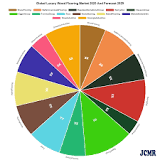Association Between NPAR and Depression Symptoms

Photo Credit: Anton Skripachev
The following is a summary of “Association of Neutrophil-Percentage-To-Albumin Ratio(NPAR) with depression symptoms in U.S. adults: a NHANES study from 2011 to 2018,” published in the October 2024 issue of Psychiatry by Zhu et al.
Researchers conducted a retrospective study to examine the association between the neutrophil percentage-to-albumin ratio (NPAR) and symptoms of depression.
They conducted a cross-sectional study with patients exhibiting depression symptoms and those without, using Neutrophil-Percentage-to-Albumin Ratio (NPAR) data from the National Health and Nutrition Examination Survey (NHANES) (2011-2018). Weighted multivariate logistic and linear regression models analyzed the relationship between NPAR levels and depression symptoms and severity. Nonlinear relationships were assessed with smoothing curves, complemented by subgroup analyses and interaction assessments.
The results showed that the study included 10,829 participants, with a depression prevalence of 15.08%. Multiple logistic regression revealed a significant positive association between NPAR and depression symptoms [OR: 1.03, 95% CI: (1.00, 1.05)] and severity scores [β: 0.08, 95% CI: (0.04, 0.11)]. Higher NPAR quartiles correlated with increased odds of depression symptoms. Subgroup analysis indicated no significant differences in the NPAR-depression relationship among those with or without diabetes and cardiovascular diseases. A 2-stage linear regression model identified a non-linear relationship between NPAR and depression symptoms.
The study concluded that NPAR levels are associated with depression symptoms, highlighting the need for larger prospective studies to explore nonlinear associations further.
Source: bmcpsychiatry.biomedcentral.com/articles/10.1186/s12888-024-06178-0#Abs1


 Malaysia
Malaysia Argentina
Argentina  Australia
Australia  Austria
Austria  Brazil
Brazil  Canada
Canada  Germany
Germany  Ireland
Ireland  Italy
Italy  Mexico
Mexico  New Zealand
New Zealand  Poland
Poland  South Africa
South Africa  United Kingdom
United Kingdom  United States
United States 


















